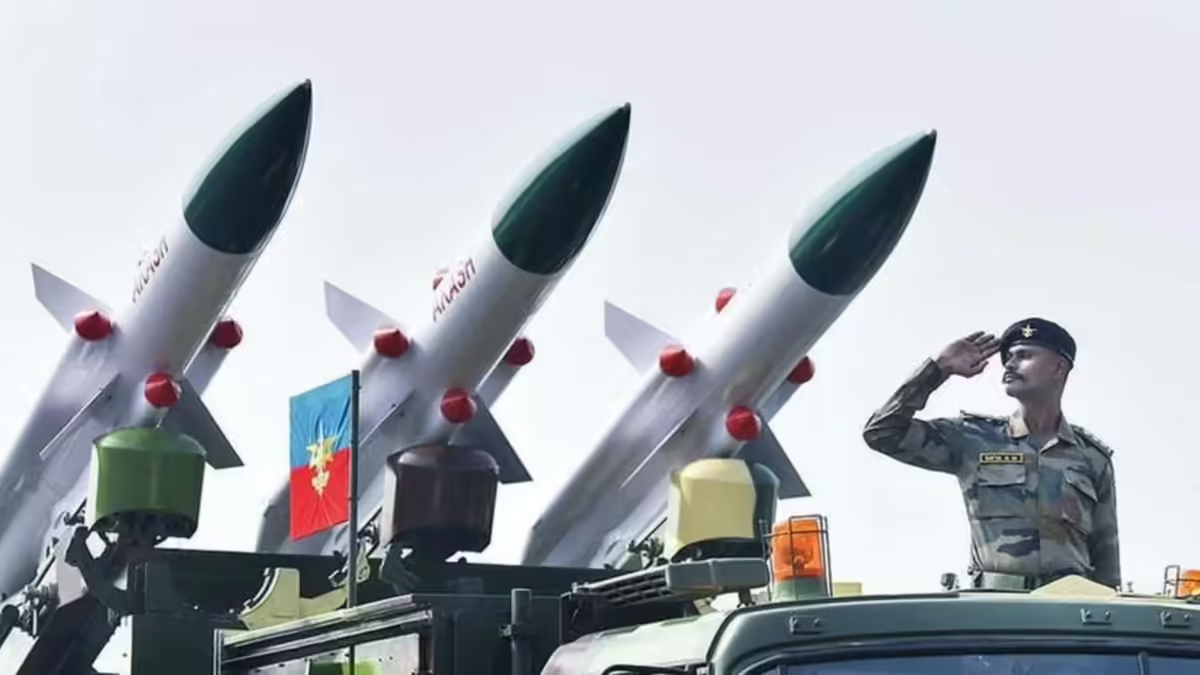The army currently spends between Rs 6,000 and Rs 8,000 crore a year on ammunition, all of which would now come from Indian manufacturers.
Major General V K Sharma, ADG (Procurement) of the Indian Army, announced that, starting in the financial year 2025–2026, India will stop importing any foreign ammunition, unless the quantities are too small to make domestic production economically feasible. This announcement represents a significant step towards self-reliance for the nation’s defence sector.
“As far as world demand is concerned, a market worth over $30 billion is available. At present not even 1% is coming from Indian sources. We have the capacity to come to 5-10% in the next 4-5 years and maybe 25-30% in the future,”
Maj Gen Sharma

No more imports from FY 2024-2025;
This action is in line with the goals of the Make-in-India campaign, which aims to boost domestic manufacturing.
According to the Stockholm International Peace Research Institute (SIPRI), the greatest importer of weapons worldwide has been India. The move to local purchasing, however, represents a significant policy change because 150 out of 175 types of ammunition used by the Indian Army will now be supplied by domestic companies.
This will significantly cut down on India’s yearly imports of ammunition, which normally total between Rs 8,000 and Rs 6,000 crore.
The Ministry of Defense has released five positive indigenization lists that identify products that can be manufactured domestically and are therefore exempt from import, which helps with the shift to local sourcing. Private industry involvement in defence manufacturing has increased as a result of this calculated move.
Focusing on Localisation:
Additionally, the Adani Group opened Asia’s largest weapons complex in Kanpur two months earlier, in February 2024. This manufacturing facility is designed to produce a variety of weapons, such as missiles, rockets, and artillery shells.
Along with the state-owned Hindustan Aeronautics Limited, the Tata Group has also achieved significant accomplishments by starting assembly operations for the Airbus C-295 transport aircraft, establishing itself as India’s first private aircraft maker.

This demonstrates the country’s commitment to strengthening its military autonomy and industrial defence basis and is reflective of the larger momentum that India’s defence production capabilities are currently undergoing.
Results have recently shown the gradual effect of the five positive localization lists, with imports meeting only 5 to 10 percent of the ammunition requirement. The Ministry of Defence has published lists of products that India can produce domestically and won’t import, known as positive localization lists.
In addition to the Ordnance Factory Boards, which were corporatized in 2021, a number of private manufacturers have now made their offerings known and built ammunition parks across the country.
This indicates the larger momentum that India’s defence production capabilities are starting to gain, highlighting the nation’s resolve to strengthen its industrial defence foundation and military autonomy.
India’s Exports breaks records:
The Union Defence Ministry announced that India’s defence exports have hit an all-time high of Rs 13,399 crore for the financial year 2022-2023.
Claiming that the country subsequently sold to more than 80 nations globally.
Italy, Sri Lanka, Russia, Maldives, Mauritius, Nepal, France, Egypt, Israel, Bhutan, United Arab Emirates, Saudi Arabia, Ethiopia, Philippines, Poland, Spain, and Chile were among the nations on the list.
According to sources within the defence establishment, India is now developing a defence ecosystem, and over the next five to seven years, imports would decline as the government emphasises encouraging indigenization.According to sources within the defence establishment, India is now developing a defence ecosystem, and over the next five to seven years, imports would decline as the government prioritises promoting localization.

The weapon simulator, tear-gas launcher, torpedo-loading mechanism, alarm monitoring and control, night vision monocular and binocular, lightweight torpedo & fire control systems, armoured protection vehicle, weapons locating radar, HF radio, and coastal surveillance radar are among the major defence equipment exported in the last five years, according to government data.




1 Comment
Pingback: UN projects India's 2024 economic growth upwards to 7%